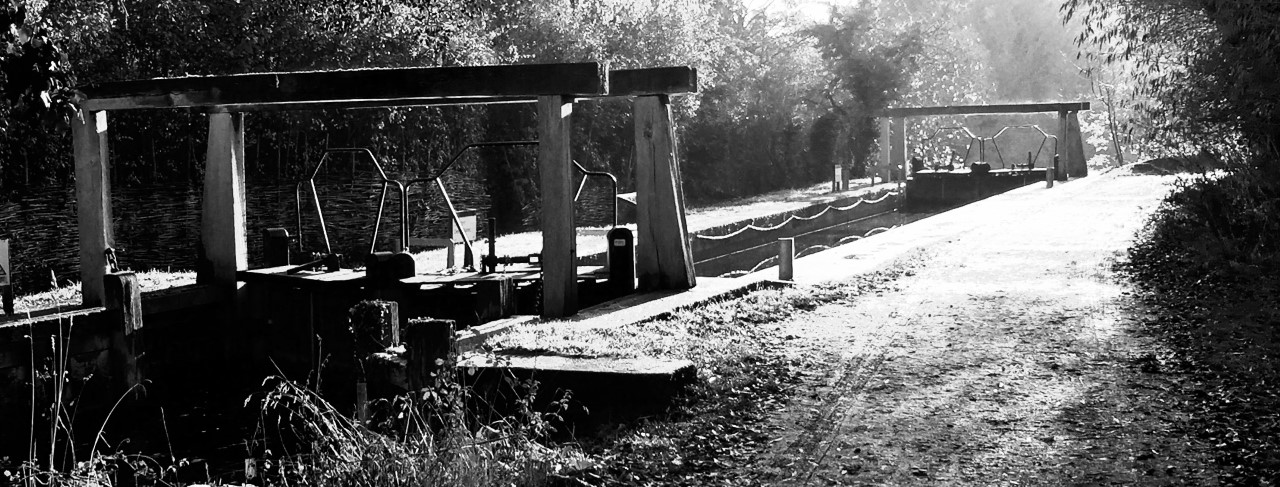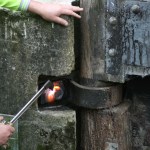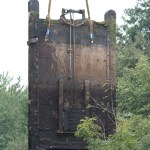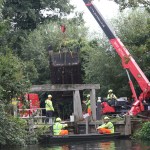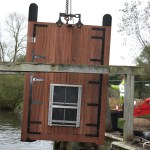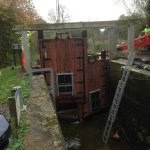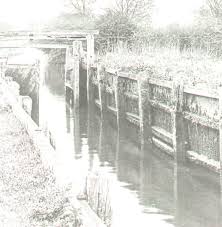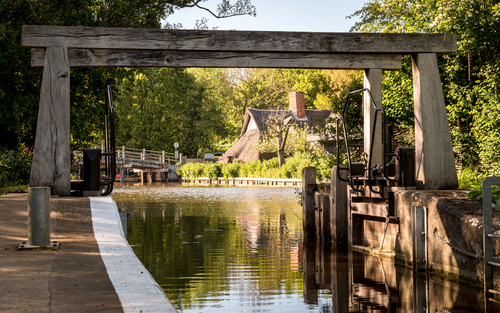Flatford Lock
The first lock at Flatford was installed in the early eighteenth century. It was turf sided and located about 20 yards to the north of the present lock.
- 31
- One of thirteen locks installed along this length of the River in the 1700's
- 51.958991, 1.020602
Details
The River Stour was made a navigable river by Act of Parliament in 1705 which resulted in thirteen* locks being installed along its length. These locks enabled horse-drawn barges (called lighters) to negotiate the differences in river levels and travel relatively easily between Sudbury and Mistley Wharf. On reaching Mistley Wharf, their loads were transferred onto sea barges (called Thames Barges) which sailed round the coast to London. *The number of locks was increased to fifteen with the opening of Wormingford Cut in 1838.
Stour lighters were usually linked together in pairs and pulled by a single horse – and so the locks were designed so they could accommodate two lighters at a time. Each lighter could carry up 13 tons and by pairing up, the tonnage was increased to 26 tons per journey, far exceeding the weight that could be transported by horse and cart. On their outward-bound journeys the lighters carried a variety of goods including Suffolk flour and bricks bound for London and on their return journeys, they carried Newcastle coal to power the Sudbury brick factories and London sewage to spread on the Stour Valley fields.
The installation of Flatford Lock, along with other locks along the River Stour, increased local prosperity, especially that of John Constable’s father Golding Constable, a Suffolk entrepreneur who by 1800 owned two corn mills, a windmill, two Thames barges and who made full use of the Stour Navigation’s lighters to transport his goods to Mistley Wharf where they were unloaded and loaded onto his Thames barges and then sailed to London.
By the time John Dunthorne painted Flatford Lock in 1814 the lock was in need of rebuilding as nine lintels (or galley beams) had already been installed to stop the lock gates and the sides of the lock falling inwards.
This painting by John Dunthorne is owned by Ipswich and Colchester Museum Service.
Although John Constable was painting at the same time as John Dunthorne he often chose to omit the lintels because they interfered with his sight-lines! Because Flatford Lock is now made of concrete, the wooden lintels are not now structurally necessary. They are retained because of the importance of Constable and the effect his life and art continues to exert in the area.
Key dates
- 1705 River Stour made a navigable river by Act of Parliament – rights to the towpath were overlooked
- 1708 Flatford Lock was built – it was turf-sided
- 1776 (the year Constable was born) the original turf sided lock was replaced by a wooden lock – this is the lock painted by Constable and all his paintings show the lock in this position
- 1838 The first wooden lock was replaced with another wooden lock but in a new position. The old lock stayed in operation while the new one was being built. The position of the new lock remains the same to this day.
- 1926 the wooden lock was replaced by a concrete construction – it was paid for by Essex and Suffolk Water as a condition of the planning permission to abstract water from the River Stour
- 1974-5 the concrete lock was restored by River Stour Trust volunteers. The restoration of the lock involved removing tons of mud and silt from the chamber and making the gates watertight
- 1990 – an automatic gate called a tilting weir (which lies on the lock bed) was installed by the National Rivers Authority to control river levels during the winter floods
- 1991 – the wooden gates and lintels above the concrete lock were replaced by the River Stour Trust
- 2014 – the oak gates had rotted and were replaced with a hard wood from West Africa called Ekki – by Martin Childs Ltd, working for the River Stour Trust. The oak lintels were in tact and remained in place
Unique features of Stour locks
- River Stour locks were unusual in that they did not have balancing beams. These beams were used on locks elsewhere in the country to counterbalance the weight of the gates and so stop them falling inwards.
- It was not possible to install balancing beams along the River Stour because to install them would have taken up land on the tow path to which there were no rights. The government had omitted to negotiate with landowners for tow path access when making the river navigable by Act of Parliament in 1705.
- As a result, Stour locks deteriorated more quickly than locks elsewhere and wooden lintels were built above the lock gates to help prevent collapse.
- These lintels became a distinguishing feature of navigation along the River Stour because they existed hardly anywhere else in the country.
- Unlike modern locks that have paddles that are operated by a rod connected to a rack and pinion, the locks in the Stour Valley used a method of lifting the paddle with a chain connected to a capstan, hard work and inefficient. This system of lock operation can still be seen at Flatford to this day.
With thanks to Tamasin, Peter & Simon @ flatfordandconstable.org
- 31
- One of thirteen locks installed along this length of the River in the 1700's
- 51.958991, 1.020602

